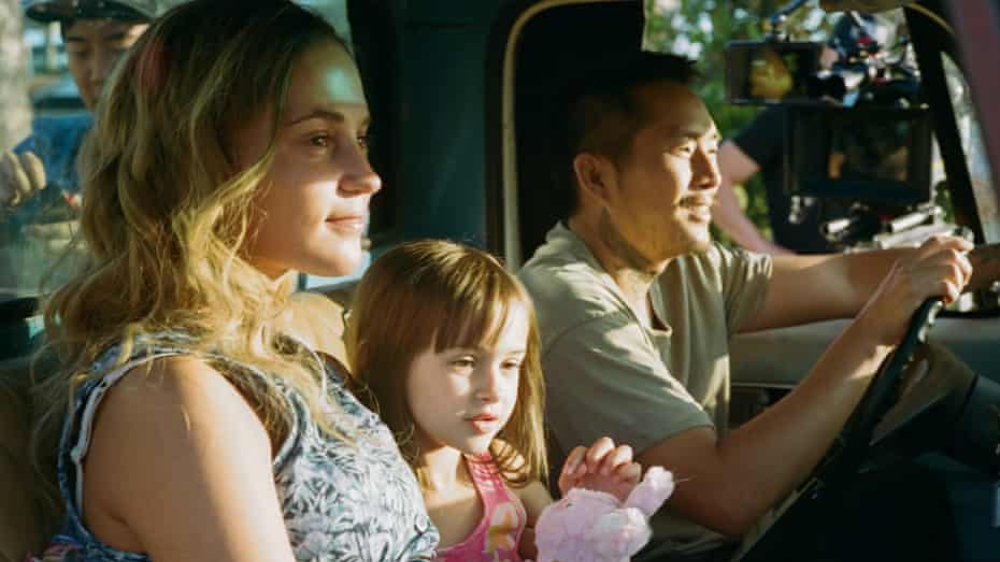
An ex-con tries to hold his family together in Blue Bayou, a Louisiana-set drama written and directed by Justin Chon, who also stars in the indie film.
Chon plays Antonio LeBlanc, a mechanic and tattoo artist whose wife, Kathy (Alicia Vikander), is pregnant with their second child, and the script saddles him with plenty of obstacles to overcome, from racist cops and unforgiving employers to Kathy’s angry ex-husband and dismissive mother. The film also captures the expansive beauty of Antonio’s blue-collar neighborhood, the vibrant Vietnamese immigrant society that welcomes him, and the moments of happiness he shares with his young daughter, Jessie (remarkable newcomer Sydney Kowalske).
As scenes unfold on streets and sidewalks, Blue Bayou takes on the immediacy of a documentary, yet at the same time, the film stock’s rich colors and deep contrasts evoke an earlier generation of independent cinema.
Like Chon’s previous film Gook, Blue Bayou was shot entirely on location, this time in and around New Orleans. The director used two cinematographers — his frequent collaborator Ante Cheng, and Matthew Chuang. Due to the extremely tight schedule (58 locations in 30 and one-half days), the two DPs worked both together and separately. Despite the pressure, they developed a seamless look that incorporated minimal lighting and equipment, as well as 16mm film for added difficulty.
Cheng and Chuang were nominated for an Independent Spirit Award for their work together on Blue Bayou. Cheng has already reteamed with Chon, having shot his episodes of the upcoming Apple TV+ series Pachinko, and he’s currently shooting a feature in South Africa, while Chuang shot the upcoming Noomi Rapace movie You Won’t Be Alone, which premiered at the Sundance Film Festival earlier this year.
Both cinematographers recently spoke with Below the Line via separate Zoom conversations.
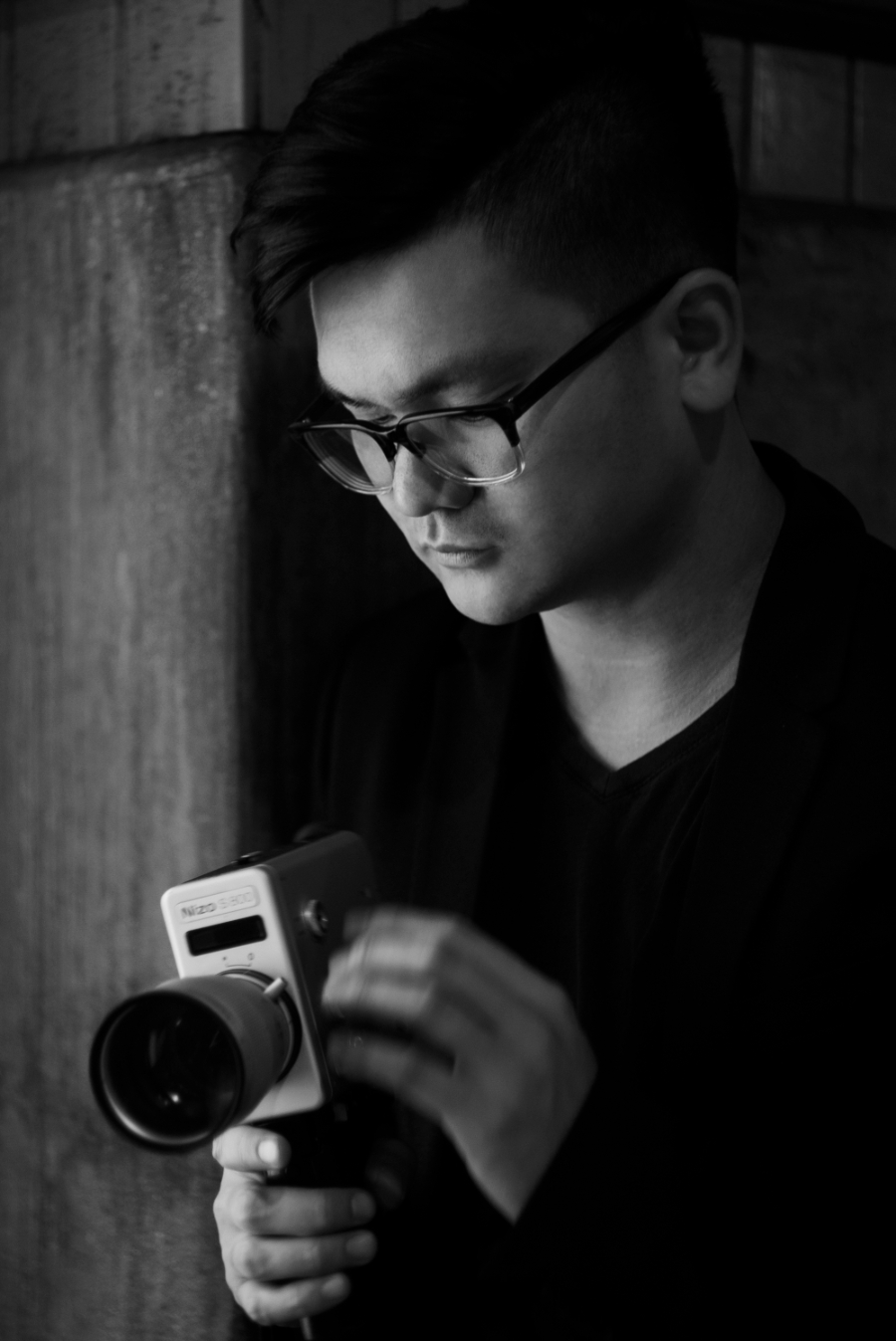
Below the Line: First, let’s talk about how you both decided to work on this film.
Ante Cheng: I worked with Justin on his previous two movies, Gook and Ms. Purple. We started prepping for Blue Bayou, but it went on so long that I became unavailable. Justin brought Matthew on, and I think they both came up with the idea of working together with me when I became available again. Other films might have two directors, two editors, two screenwriters. I thought [having] two DPs would be interesting. Justin’s doing three jobs at once — writer, director, and lead actor. This would be a way to share the workload and also bring something fresh to the table.
Matthew Chuang: When Alicia came on, the budget kind of blew up and became bigger than we all thought it would. Ante and I decided to do this as a true partnership.
BTL: How did that partnership work in practice?
Chuang: We both discussed lighting equipment, film stock. We scouted together. We bounced ideas off each other. You know, we shot the film in around 30 days, and we had 58 locations. During some days, we would shoot simultaneously on two different units. Justin would start off with Ante shooting a motorbike sequence on a process trailer. And then he would jump with the stunt team and I would film him riding the motorbike while Ante started a new setup. We would kind of leapfrog and Justin would bounce between the two of us to make our day. The producers and the AD really loved that there were two of us.
Cheng: There were many intimate, emotional scenes. And we were shooting on film. We had rain, kids, stunts, bikes going into the water, people underwater. It was a lot to deal with.
BTL: Do you think having two DPs made Blue Bayou a better film?
Cheng: Definitely. Definitely. I think we shot every single scene together, so it was very collaborative. Also, working on this was just so physically demanding. We were wearing full-on waders walking around chest-deep in the bayou, carrying film cameras on our shoulders while the alligator and snake wranglers were looking around for us.
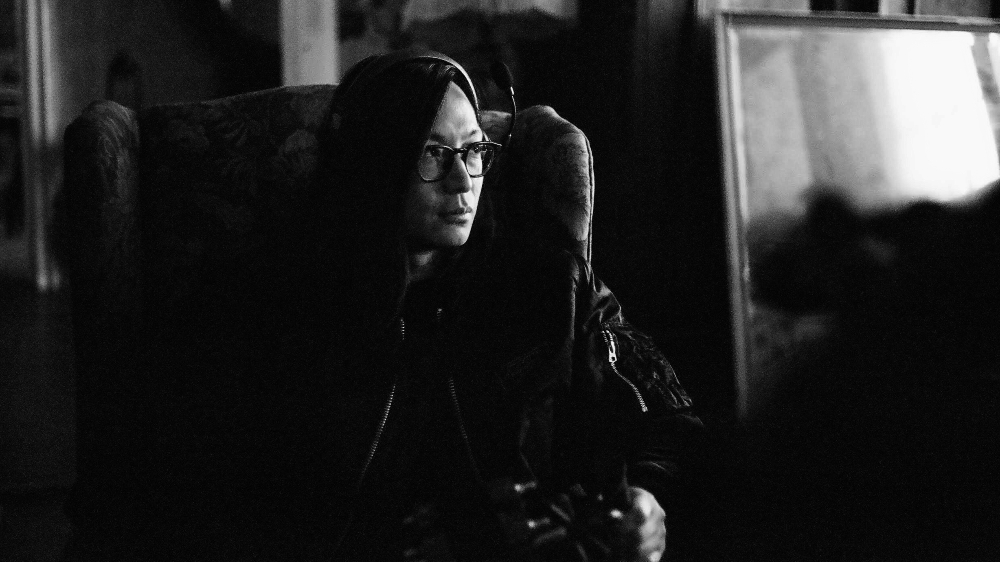
BTL: How would you describe the film’s visual style?
Chuang: Justin’s previous two films used a lot of handheld, [so they were] fluid, and quite spontaneous. He felt shooting on 16mm would add to the drama and the texture and the world that we were trying to capture. When I came on, we looked at a lot of 1970s films that were shot on primarily 16mm, like those by John Cassavetes. Then we moved to the Mexican New Wave — Amores Perros, Y Tu Mamá También, films that had a really strong sense of place.
Cassavetes approached the format in a way that we embraced. Hand-held, some zooms as well. They were a staple of 16mm. We just looked for ways to be able to work with the camera and our visual language without a whole bunch of resources. We kept it natural, kind of streamlined.
BTL: What about the decision to shoot on film? Did that make your jobs more difficult?
Cheng: Shooting on film has always been a dream for the three of us. I do all my personal photography on film. This was the right project at the right time with the right budget. We gave up all the toys to be able to shoot on Super 16, and in the end, I think it’s true to the movie. We went back to a very pure way of filmmaking. Just a camera and the actors, most of the time in natural or minimal lighting. It’s about capturing the performances, feeling what the actors are giving out.
Chuang: To convince the producers to shoot on 16, you know, it’s a considerable cost for a film of our size. We had to balance out our resources to support the use of film. We had no real dolly, no real grip support, no cranes for the most part. There are a couple of dolly shots in there, but it’s a doorway dolly, the camera on a board.
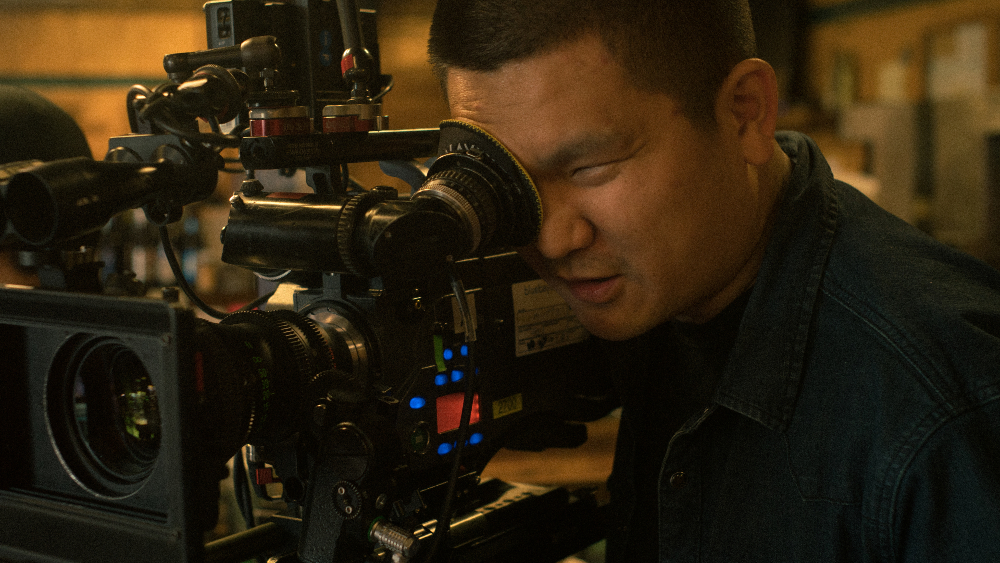
BTL: Can you talk about your camera and lighting package?
Chuang: We had the Arri 416, the last 16mm produced by them. We used Zeitz Superspeeds and a couple of Canon zooms.
Cheng: The Arri is a very ergonomic camera, it balances well on the shoulder.
BTL: How did the look of Super16 help this film?
Chuang: New Orleans is such a vibrant place, but it can be quite dark. And the weather’s quite extreme. New Orleans has so much texture, a lot with a darker edge to it. We thought 16mm really captured that world.
We used Kodak 250T and 500T, and 250D for anything that was sunrise or sunset.
Justin really likes the artist Richard Mosse, who uses infra-red, a film stock from World War II. The military used it for surveillance. So we utilized that in some shots.
Cheng: We played with different film stocks and techniques. Kodak was just bringing back Ektachrome, so we used it in the chop shop after the motorcycle heist. We cross-processed the Ektachrome to give it vivid colors and high contrasts. We found a hand-cranked camera at Panavision and did some crazy hand-cranking at low frame rates. A few of those shots made it into the movie.
Chuang: Wong Kar-Wai and Christopher Doyle used something similar. Justin and Ante used it in their previous films too. It’s a step-printing technique where you shoot at eight frames per second and kind of extended back out to 24 fps. So it kind of blurs and has this abstract feel to it.
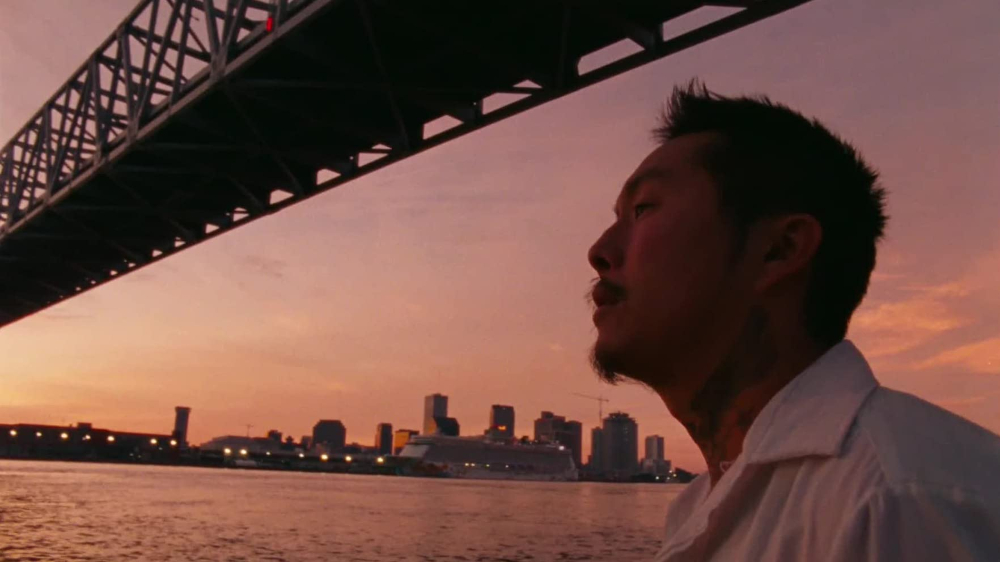
BTL: Can you explain cross-processing?
Cheng: You intentionally use the wrong developing process, like, you shoot on slide film but process it for negative. It turns out a very magical image. Tony Scott used to use it.
We knew going into this that we had quite a few exterior day shots, characters coming out of shade into sunlight. Skin tones in direct sunlight look so much better on film because it has more latitude. You can over-expose it and it still looks really good.
We also used Vaseline on the lens, a lot of old-school techniques like that.
BTL: Let’s talk about the motorcycle sequences. They have an intensity and immediacy you don’t often see in movies.
Chuang: Early on in the prep, Justin said he wanted the motorbike stuff to be real. This is the time where his character can reflect on everything that’s happening. He wasn’t quite sure if they would allow him to ride his motorbike for insurance reasons. We used a combination of process trailer, where’s being towed on a fake motorbike, to him riding on a bike, to some stuff with the stunt driver.
Scenes where his daughter Jessie is riding on his back, we obviously couldn’t do that for real. Ante would shoot that on the process trailer, get the close-ups.
Cheng: It’s designed so the motorcycle can lean side to side. I can shoot as if they were riding. It was exhausting, harder than I expected because I was squatting down and had to be harnessed to so many points. The road was very bumpy. It was hard to balance while shooting these long, long hand-held shots.
Chuang: Then I would be with the stunt team on a motorbike with a sidecar which they replaced with a platform. I would film the wider shots, also that shot where we zoom in on his close-up.
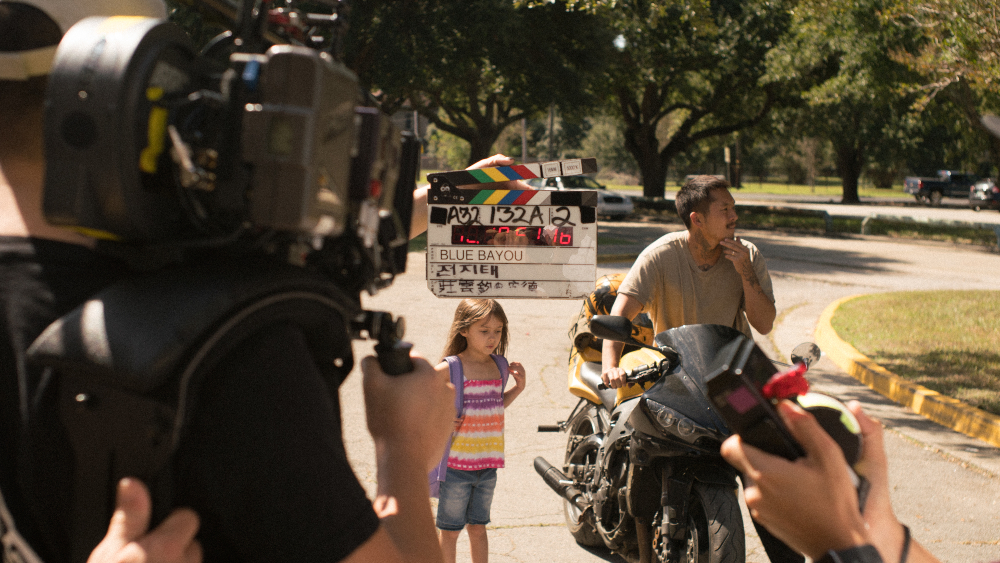
BTL: That’s an amazing shot, you stay on him for blocks.
Chuang: It starts as a mid-shot so we can see that it’s Justin on a motorbike, then I zoom all the way in as he processes what to do about his mother. We wanted it to be shaky and gritty, that’s his state of mind at the moment. We could have done it with a tracking vehicle and a stabilized Russian arm, but that would have taken away his thinking, his indecision.
We didn’t have a lot of time to get that shot, but we tried a few takes. And that last time we were thankful that we got it.
BTL: Let’s talk about the big barbecue scene. There’s a lot of people, music, and dancing, and it stretches on from afternoon to night.
Chuang: Yeah, an outside party. Justin wanted to be able to move from this table where the main characters are sitting through the crowd to the musical stage. That was one of our biggest lighting setups. We had a crane with a soft box. Spending the money on the crane meant we could move around to different areas very quickly.
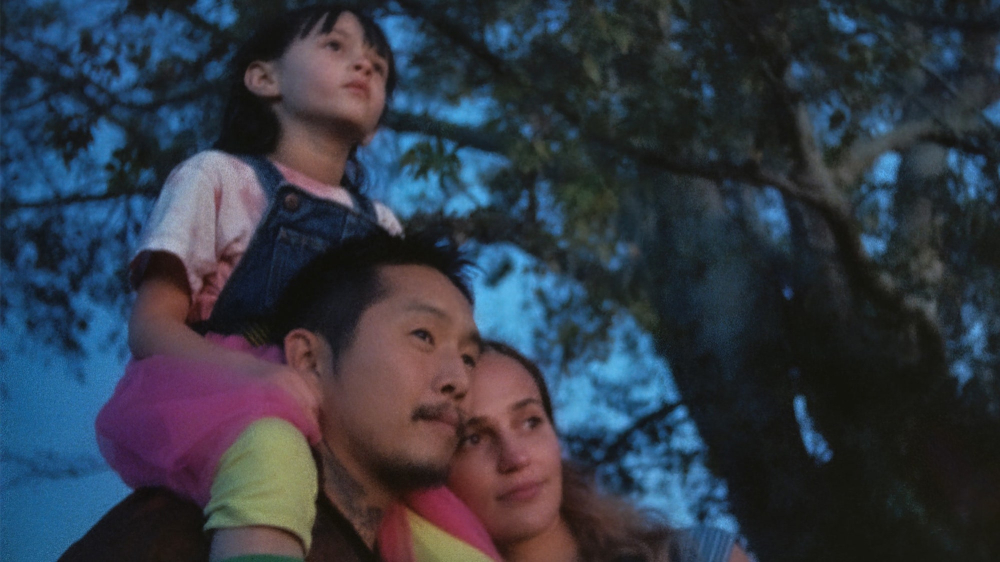
BTL: The skin tones in those shots are just phenomenal, they look otherworldly. And then you have Alicia Vikander singing the title song.
Cheng: We had to shoot that whole party in one night. There were so many pieces. We’re in November, Alicia is wearing a summer dress, but it was so cold that you can see the breath coming out of her mouth. It may be the only time I was moved to tears while operating.
We knew she was going to sing in the shot. But when we went for a take she sang live, with the band playing live. Her voice, the lyrics, how hard it was to get to this point, how beautiful everything was in the moment — I started tearing up. Because it was so cold, my viewfinder fogged up. So I couldn’t see much, and I couldn’t take my eye off the eyepiece because we’re on film and we have that big soft box overhead. All I could see was this blurry, blurry image. She finished the song, it’s something like three minutes, and everybody was so moved. Justin and Matt came over and asked, how was it? I had to tell them the truth, that I was crying and the eyepiece was foggy, but I thought it was beautiful.
BTL: Many scenes take place in their home, which is pretty small and cramped. How did you work out the blocking with Justin and the actors?
Cheng: We’ll have a rough idea of the blocking when we go in. Because we spend so much time in prep, and because he wrote the script, we know the scenes so well, what they’re trying to convey. For this film, we lit for the space instead of for the shot. So the actors and cameras have the freedom to go anywhere. Especially with Jessie, the young girl, we didn’t want to be locked down with marks to hit.
It’s very demanding on the focus puller, but you just feel it out. It evolves from wide to close on someone and up into the reverse and back into a two-shot.
Chuang: Justin never really watched playback. So for a lot of those dialogue shots, I would watch the monitor and be able to say, okay, we got that. Or maybe tell Ante ‘stay on this actor longer.’ Justin wanted us both to be able to look out for him.
Cheng: Both Justin and Alicia are incredible actors, and it really helps them to run scenes uninterrupted. We know from experience that there’s a sweet spot for them. It may be different for each actor, but after a few takes in, they’ll hit it, give out their best performances. After you pass that, it’s not as good, people start to get tired, it feels more rehearsed, not as raw. We just have to be there to capture them at their best.
Blue Bayou is now streaming on Amazon Prime.





